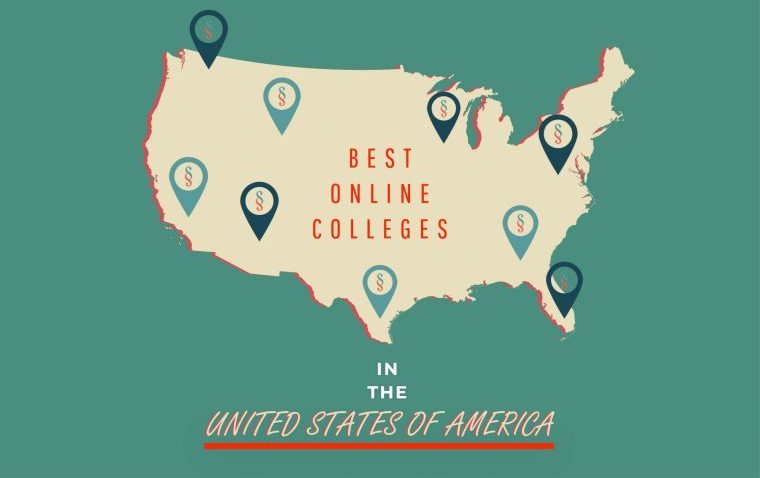This is a ranking of the best online colleges and universities in America.
Online degrees are now available in every degree level. This includes associate's, bachelor's, master's, doctorates, and undergraduate and graduate certificates. Online degrees are as reputable and respected as traditional on-campus degrees.
Traditional brick-and-mortar colleges and universities, including ivy league universities, offer fully only programs for undergrad and graduate students. Prospective students interested in online college should first see which online college or online university offers their major subject.
Many of the most popular degrees are also programs that are available to distance learners, including business administration, international business, healthcare administration, criminal justice, and computer science.
Colleges and universities may download our badge.
See our article The Top 10 Most Popular Online Bachelor's Degrees.
For online degrees with the highest paying salary potential, see our article The 20 Best Online Degrees To Get For Careers.
The Best Online Colleges and Universities in America
Penn State World Campus
Centre County, PA
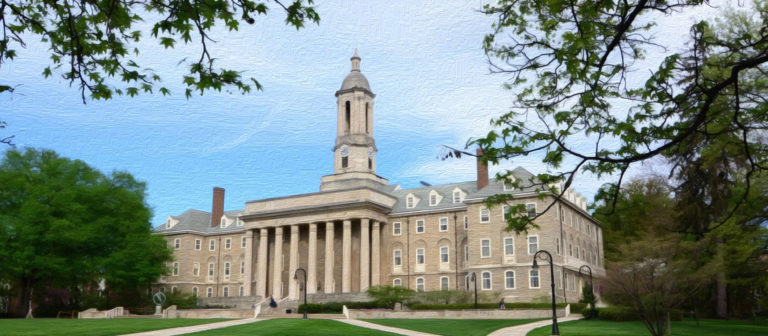
Penn State combines one of the world's largest residence campuses, with a World Campus available to distance learners, with many online degree programs.
Unlike many other online colleges, this school has been building up a reputation since its founding in 1855.
It currently has a reputation for most recent research excellence that consistently ranks it among one of the top universities in the world in rankings of online schools.
But Penn State's distance education program has a unique advantage. Unlike many contemporary brick and mortar schools which are just now developing distance education programs, Penn State has been offering distance learning degrees since 1892 by offering correspondence degrees.
By the time the internet made distance learning popular, Penn State had already developed a fully functioning system. This is why studying at Penn State's World Campus allows one to tap into many of the advantages associated with a traditional brick and mortar school.
Students are taught by the same professors who teach on campus, and are given access to the same 500,000 plus member alumni associations and networks. They also have a large variety of programs to choose from, with over 100 degrees or certificates available.
This is because its distance learning school still has more experience than most traditional ones, so it is no wonder why students can fit studying into their own schedule, avoid relocating, retain their jobs, and enjoy the various other cost saving benefits that come with studying online. Penn State's online campus attracts students from all 50 states and over 60 countries.
Accreditation is by the Middle States Commission on Higher Education.
University of Florida
Gainesville, FL
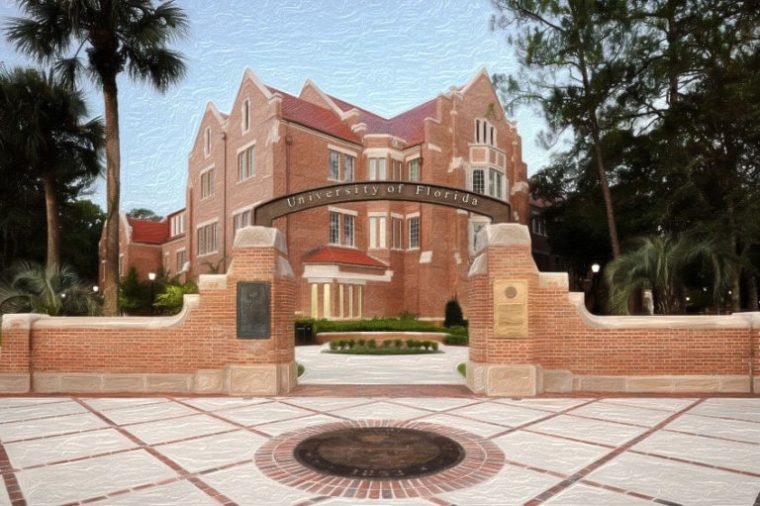
Originally founded as a seminary in 1852, the University of Florida is the state's oldest academic institution and has grown to claim 16 colleges with campuses and an excellent online degree program.
The school hosts over 4,000 faculty, including two Pulitzer Prize winners; over 50,000 students each year; and has invested $740 million in research and development.
The online program offers more online class options than many of its competitors. Typically, distance learning education focuses on both undergraduate and graduate level courses.
Florida offers such degrees, including a variety of bachelor's in the arts or sciences, up through master's degrees, and even doctorates, in subjects such as business administration, education, nursing, philosophy, and more.
The Southern Association of Colleges and Schools Commission on Colleges provides accreditation.
University of Massachusetts Lowell
Lowell, MA

The University of Massachusetts was established in 1863.
Their online schools have a focus on providing students with high quality education. It is consistently ranked among the top 100 Universities in the world. This fully accredited school has an alumni network of 320,000, which continues to grow.
There are 5 major campuses, including a graduate level Medical School. There are over 100 opportunities for programs online that have been available for the past 25 years. The online program is proud to have earned the Excellence in Distance Teaching Education award.
Online students have the same access to industry leading professors, including Nobel Laureates and Pulitzer Prize winners, as those on campus.
The New England Commission of Higher Education (NECHE) provides accreditation.
Boston University
Boston, MA
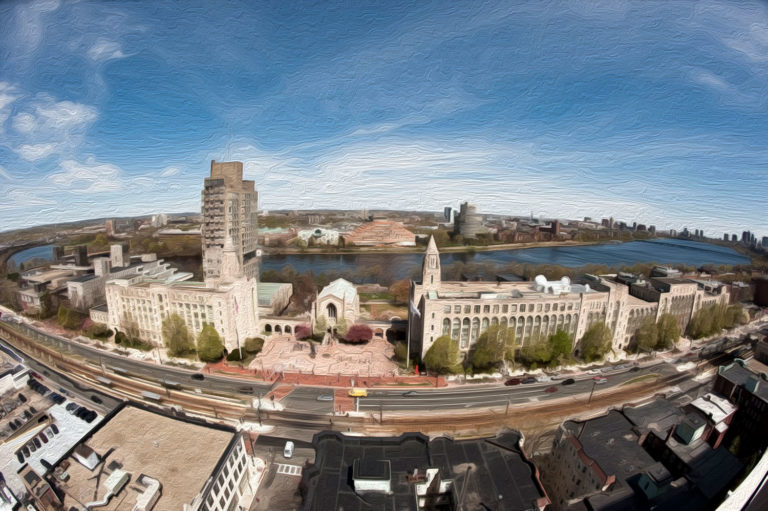
Boston University offers flexible, dynamic programs online for adult learners and high school graduates.
Their interactive online technology allows for study groups and additional support from teachers and peers.
Online students will have access to much of the same material from the 24 libraries on campus through the digital data bases, e-Books, and e-Journals.
Boston has also received the U.S. Distance Learning Association award for the 21st Century Best practices, as well as the Sloan Consortium award for Excellence for Institution-Wide Online Education.
The university itself, one of the largest in the United States that is independent and nonprofit, has been providing students with a well-rounded education for over 140 years within 250 fields of study. Boston has a 1.4 billion dollar endowment and has invested over $355 million in research.
The 3,800 faculty members teach throughout 16 schools and colleges, including the programs online. Between the graduate and undergraduate programs there are over 33,000 students. There is a 250,000 large network of alumni worldwide.
The New England Commission of Higher Education (NECHE) provides accreditation.
Arizona State University-Tempe
Tempe, Arizona

Arizona State University, well known as the Sun Devils (for both their mascot and desert location in Phoenix), has a well established online system, making it one of the best online schools.
Leading educators, including two Nobel laureates and 142 Fulbright American Scholar award recipients, teach over 90 degrees and certificates online.
All students are paired with academic advisers and have the option of a mentor within their particular field of study. Additional academic aides can be found in the online library system, which includes 693 databases, 81,937 e-journals, and over 403,000 e-books. Multiple tutorials and research guides, created by the librarians in order to support online students, are also available.
Classes are designed to be engaging and logical in presentation. The well structured and interactive curriculum allows students to focus more easily on the material. There are over $1 billion dollars available in financial aid and scholarship awards to students, which includes in person programs and those enrolled online.
Arizona State University also puts more effort into personal attention for its online students than your typical distance learning program.
Undergraduate and graduate students have access to enrollment counselors and academic advisers who provide advice on what courses to take as they navigate that journey, and success coaches that connect students with numerous career resources.
Southern New Hampshire University
Hooksett, NH
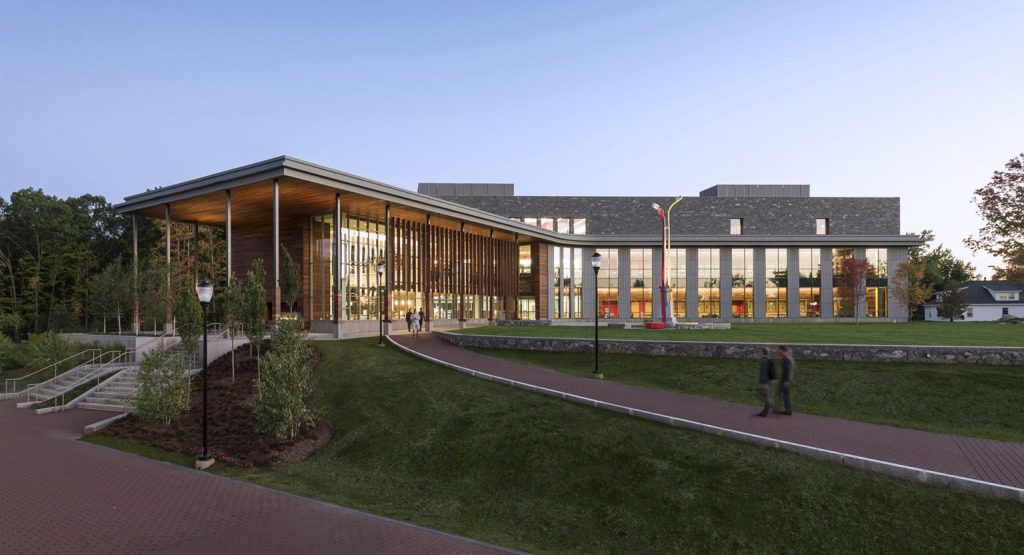
Although originally founded in 1932 as the School of Accounting and Secretarial Science, Southern New Hampshire University has grown into the much larger and well known university that it is today.
SNHU is a private, non-profit, accredited institution with a school of business, education, and liberal arts.
The school also runs an intensive, three year honors program. It is held in high regard by G.I. Jobs for its amiable attitude towards the military.
Students have access to over 90 undergraduate and over 90 graduate degree programs in addition to over 20 online certificate programs. There are no application fees for U.S. based online undergraduate or online graduate students.
Their Shapiro Library if filled by more than 100 databases and all their corresponding resources. The school also offers 24/7 tech support in case malfunction ever gets in the way of the online learning format.
New Hampshire's sophisticated use of cutting edge technology is why Fast Company named it the 12th most innovative company in the world, ranking it among names like Apple and Google.
Get InformationWashington State University
Pullman, WA
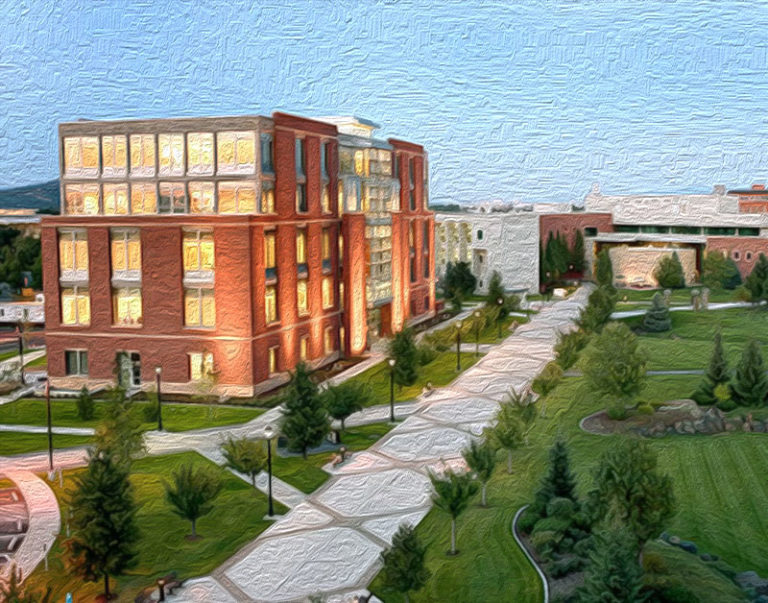
Washington State University was originally founded in 1890, and now has over 28,000 students and 196,000 alumni worldwide.
Students benefit from over 200 fields of study, which include 67 master's and 46 doctoral programs. Of these, 8 undergraduate, 12 graduate, and 12 certificate programs are available online, and more are opened to distance learning each year.
The online program, established in 1992, has made groundbreaking strides through dedication to the same rigorous workload as required by on-campus students.
The online library offers 590,000 e-books and 95,000 journal titles.
Washington has also developed a variety of online certificates in fields which, although typically not studied in and of themselves in degree-granting programs, are very useful compliments to education. These include gerontology and organic agriculture at the undergraduate level, and bio ethics and sustainable agriculture at the graduate level.
Drexel University
Philadelphia, PA
Private
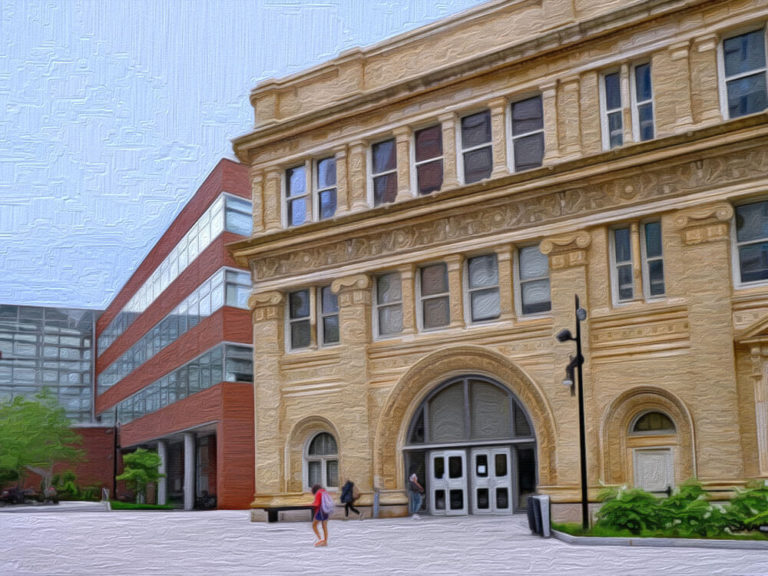
Located in the heart of the city of Philadelphia, Drexel University is one of the top 15 largest private universities in the nation and one of the city's top 10 employers.
There are 200 programs offered which have attracted over 26,000 students. Drexel's reputation, facilities, and alumni produce $110 million in sponsor-supported research each year.
While Drexel was originally founded in 1891, its online school began in 1996. The school developed a tradition of quickly implementing new technology. In 1983 it became the first university to require all students to have micro computers, in 2000 it became the first fully wireless indoor/outdoor campus, and later became the first university with a web portal service for students in 2002, and a university portal app in 2011.
This early jump on the growing online degree world combined with an overarching appreciation for technological development has led online student participation to grown to an impressive 5,284 online students.
Without compromising quality, classes are easily fit into the busy schedules of its professional students who are working towards completing their degrees or enhancing their current positions. There are over 130 degrees and certificate programs available online. These include graduate degrees.
Drexel has an especially well known MBA Anywhere business program. The online college also consciously seeks after military veterans. Drexel has an entire department dedicated to helping veterans get the maximum benefits from their military experience, which all applies to their online degrees.
Furthermore, the online college runs a partnership program for its online students. The university provides 10 to 40 percent tuition reductions to employees working for companies that assist their workers attending Drexel online. Currently over 500 corporations and organizations partner with the online school.
Oregon State University
Corvallis, OR
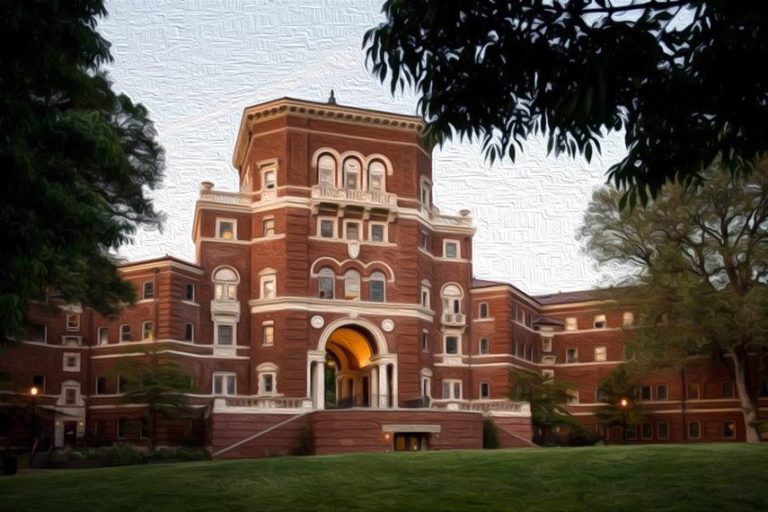
Oregon State University was founded in 1868 and is now the state's largest public research university. There are more than 30,000 students enrolled with 200 undergraduate degree programs and over 80 graduate programs, making it one of the best online schools.
Oregon State is a well established research university. It has particular strengths in several applied sciences such as the marine sciences, sustainable food systems, and forestry.
This is why Oregon State's online university can now offer over 30 online bachelor's degree programs in addition to 20 online graduate programs. It has more than 900 courses in over 90 subjects available online. E-campus library services are also available. Now about 4,000 of its students, or a sixth of its pupils, now take classes towards a college degree online.
Rochester Institute of Technology
Rochester, NY
Private
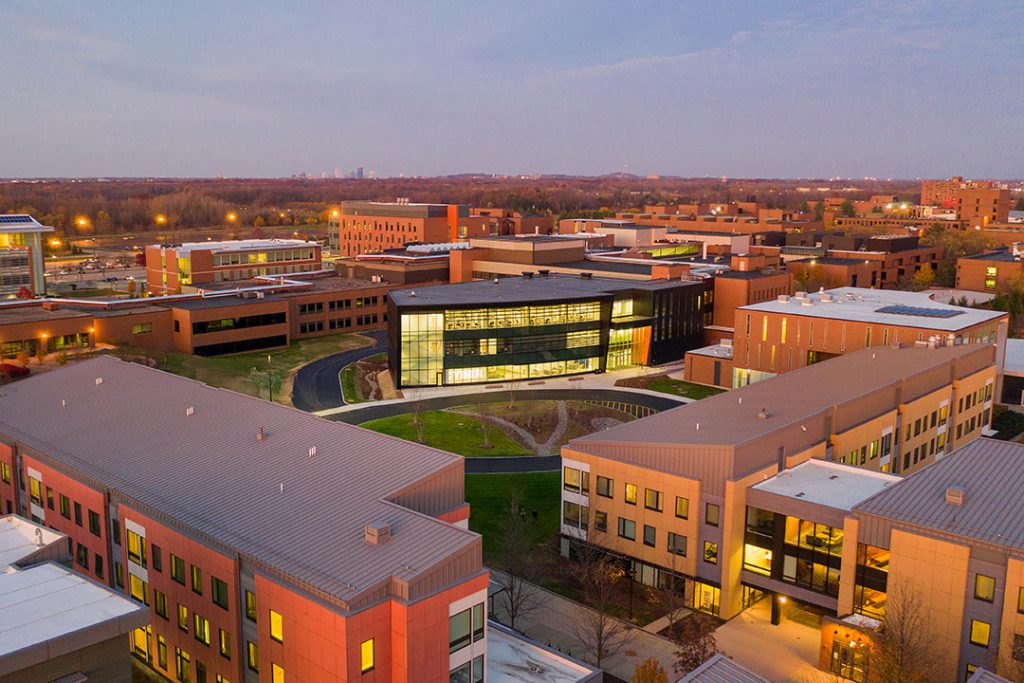
Rochester Institute of Technology was founded in 1829 with a focus on science and the arts.
These students represent every U.S. state and over 100 nations worldwide. The school hosts over 1,000 full time faculty. Unique to Rochester is its leadership in educating deaf and hard-of-hearing students.
Their online programs were established in 1991, and are easily managed with the use of Mycourses. This web-based course management system helps many online students easily navigate their online degrees. The system has been keeping students organized since 2002. The campus library offers the online student easy access to 250 electronic databases, 40,000 electronic journals, and more than 150,000 e-books. Rochester also runs a regular symposium series.
Three times each year guest speakers come to Rochester in order to discuss furthering the impact of online school. Rochester students can also pursue blended curriculum, which utilizes both traditional and online school.
Liberty University
Lynchburg, VA
Private
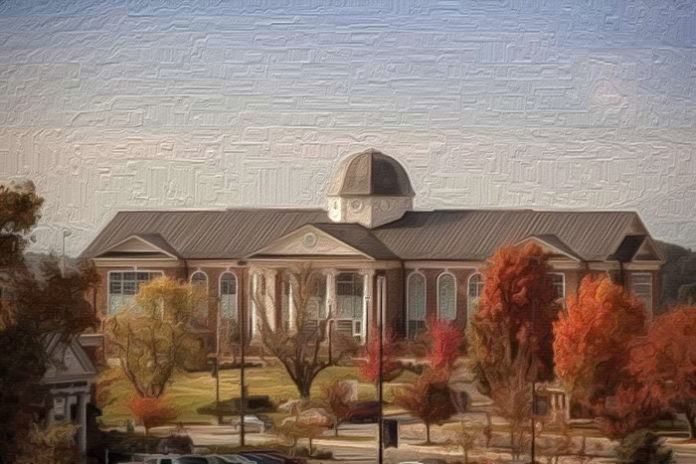
Liberty University is one of the largest private, nonprofit universities in the U.S. It is also the world's largest Christian school. The majority of the students and faculty at the school share in this perspective as well. The academy was founded in 1971 with distance education in mind.
This gives Liberty a unique approach to online school. Whereas most of the online colleges and universities on this list started off as substantial brick and mortar research universities that already had the resources necessary to fund a distance learning program, Liberty focused on distance learning from its inception.
They then used these funds to promote its brick and mortar school.
This is part of the reason why there are 2,500 full and part-time faculty teaching over 250 distance learning degrees. In total there are 450 programs from certificates to doctorates.
There is an online writing center and students have access to tutors 24/7.
Financial aid resources, including financial aid forms, are available on Liberty's website here:
Florida State University
Tallahassee, FL
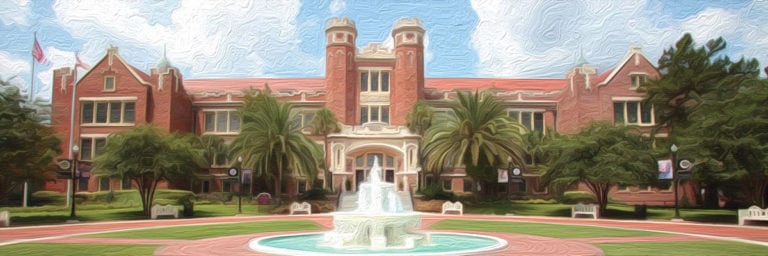
Located in the capital city of Tallahassee, Florida, this prestigious research university is the oldest and most well known in the state. Founded in 1823, a total of six Nobel Laureates have taught at the school through out the years.
Currently there are over 2,000 full time faculty, and 40,000 students participating in 275 different programs including undergraduate, graduate, doctoral, professional and specialist degrees.
As a leading university, the school also offers online and distance programs for the busy adult, part-time student, or even the full time on-campus student who wishes to supplement with additional online classes. Class work is equally challenging and interactive, but is also more flexible and easily managed.
To help supplement online work, the library offers over 1,000,000 electronic books, over 800 databases, and over 86,000 electronic journals. Students have over 100 online programs to choose from, including its online Masters in Business Administration which is ranked fourth in the nation.
Northeastern University
Boston, MA
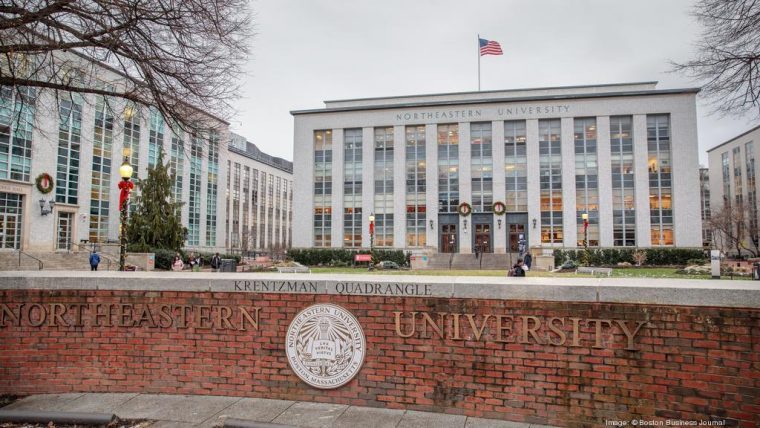
Founded in 1898 in Boston Massachusetts, this nonprofit research university has students spread across four campuses and the internet.
This student body is one of the most diverse in the nation, and enjoys over 150 undergraduate majors and concentrations. A strong global outreach can be felt on and off campus with more than 3,000 connections over seven continents.
The distance learning student can participate in this globally minded community and feel at home. More than 70 programs, degrees, and certificates are available to the online student. Areas of study range from liberal arts to law enforcement, criminal justice, and graphic design, just to name a few. Assistance for the online student can be found in the numerous counselors, advisers, and tutors, all willing to dedicate their time to the success of their students.
The library also offers 513,139 e-books, 74,893 licensed electronic journal titles, and 3,714 licensed streaming videos. Northeaster University also recognizes that the ability to communicate acquired knowledge is as important for teachers as the ability to acquire it in the first place. Consequently, all online faculty, including those with previous online teaching experience, are required to undergo online teacher training.
University of Missouri, Columbia
Columbia, MO
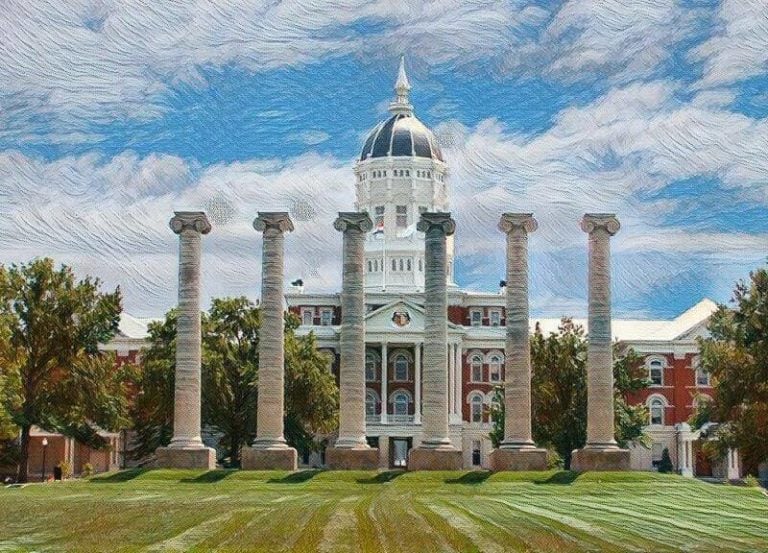
Founded in 1839, the regionally accredited University of Missouri was the first public university west of the Mississippi River. There are over 300 degree programs available to the 35,000 students on campus. Online, there are over 90 degree and certificate programs with over 900 courses.
Students have the option of semester based courses that run the same as the on-campus classes, or self-paced online courses which offer more flexibility.
Their research presence is what made the University of Missouri one of only 34 public universities to join the coveted Association of American Universities.
Mizzou Online combines these generic strengths with many specialized offerings. For example, the library offers a record 1 million e-books. Furthermore, the school has over 90 available online degrees in undergrad and graduate levels combined.
The University Professional and Continuing Education Association (UPCEA) awarded Mizzou's doctorate in Educational Leadership. The University of Missouri has accreditation through the Higher Learning Commission.
Purdue University Global
West Lafayette, Indiana
Purdue University Global is a leader in online education, offering over 175 online degrees, from undergraduate to graduate program, and certificates. The university's online start dates are monthly, and they offer accelerated bachelor's degrees.
Another benefit to students, is that there is no fee to apply, and students can test the waters and attend classes to see if Purdue is a good fit, before committing to the degree program. Purdue University Global accepts qualifying transfer credits, and offers course credit for prior work or experience.
Purdue University Global is accredited through The Higher Learning Commission.
Regis University
Denver, CO
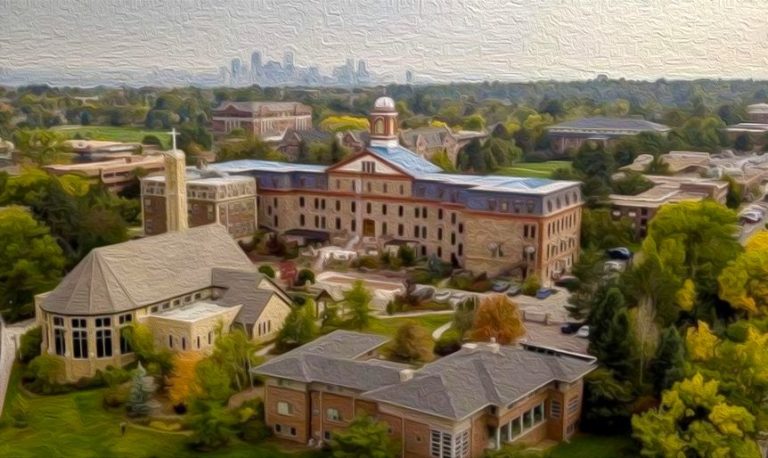
Regis University has kept its small, Jesuit school appeal. Its 15,000 students enjoy a 14:1 student/faculty ratio, and alumni are also instantly connected to the other 27 Jesuit schools in America, and to the hundreds more located around the globe.
This is part of the reason why their online programs are connected with the Jesuit University of Guadalajara, Mexico.
The relationship quickly grew to establish the first online bilingual joint MBA degree program. Regis University is also just one out of 102 universities honored by the John Templeton Foundation Honor Roll for character building universities, and has produced two Rhodes Scholars.
Regis University's online programs have been recognized for their particular strength in Computer and Information Science and Information Assurance Education. The school's online presence has strong ties with multiple industry leaders such as IBM, SAP, and Oracle, as well as fellow universities like the National Defense University, and the University of Technology.
Robert Morris University
Pittsburgh, PA
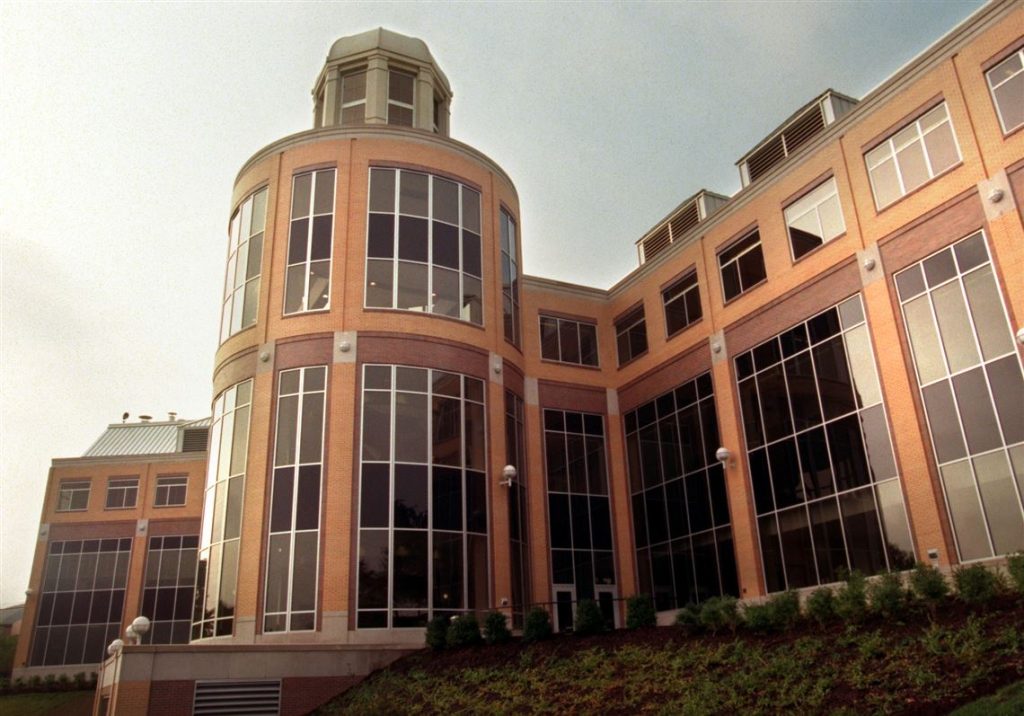
Robert Morris University was once known as the Pittsburgh School of Accountancy. Founded in 1921 it continues to be a strong, privately owned, suburban University with an emphasis on leadership in education.
The school hosts more than 60 undergraduate programs and 20 graduate degree programs taught by 200 full-time faculty members.
Robert Morris' online/distance learning programs are well organized by the Student Services Team. This behind-the-scenes team enables both the students and professors to have the best class experience possible.
Students are assisted through choosing the right courses and given the resources needed for classwork and graduation. Part of these resources include the 69,300 unique electronic journal titles and 166,859 e-books provided by Cline library. Professors are given aide in designing the best course for their students to engage in and learn from.
Florida Institute of Technology
Melbourne, FL
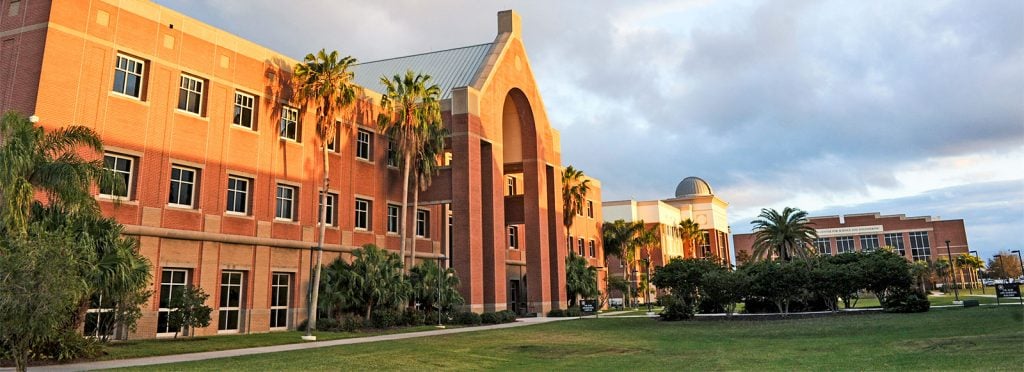
As the only independent, technological university in the Southeast, Florida Institute of Technology is an excellent opportunity for students seeking an individualized education. The smaller class sizes have a 9:1 student/teacher ratio that allows for personalized attention and easy access to the 245 full-time faculty.
Students can find more than 60,000 alumni in over 120 countries.
Founded in 1958, Florida Institute has been offering online programs since 2000. Their online programs are an excellent option for working adults.
There are over 60 programs available offered in 8-week terms and 16-week semesters. Classes can be taken full or part time and can be managed with a busy working schedule. Also, unlike some competitors, Florida couples its inexpensive online tuition with additional scholarship money. There are numerous advisers ready to walk students through the online process.
University of Minnesota, Crookston
Crookston, MN
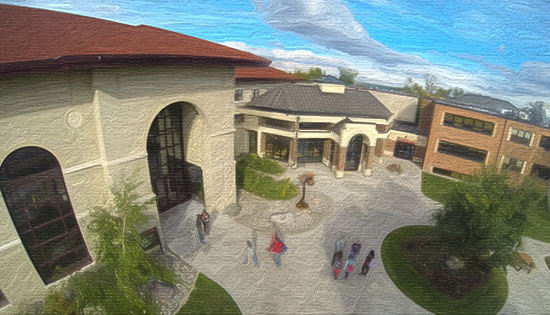
The University of Minnesota Crookston works in conjunction with the greater University of Minnesota. Crookston offers 29 undergraduate degree programs, 36 concentrations, and 20 minors.
The student body represents 20 countries and 45 states.
Their online college is recognized as being one of the first in the nation to offer laptop computers to all students and faculty.
It is broken into four sub schools, which include Business, Agricultural and Natural Resources, Math Science and Technology, and Liberal Arts and Education.
Minnesota has developed a particularly strong reputation in scientific and professional fields such as those pertaining to natural resources and business.
Online programs are offered through the Center for Adult Learning. Any online courses can be easily transferred to other Universities or may be used towards completing a degree or a certificate at the University of Minnesota.
Courses strike a balance between self-driven and guided. They must be taken during 15 week fall or spring semesters, or 8 week summer semesters, but do not require students to be online at any particular time.
Northern Arizona University
Flagstaff, AZ
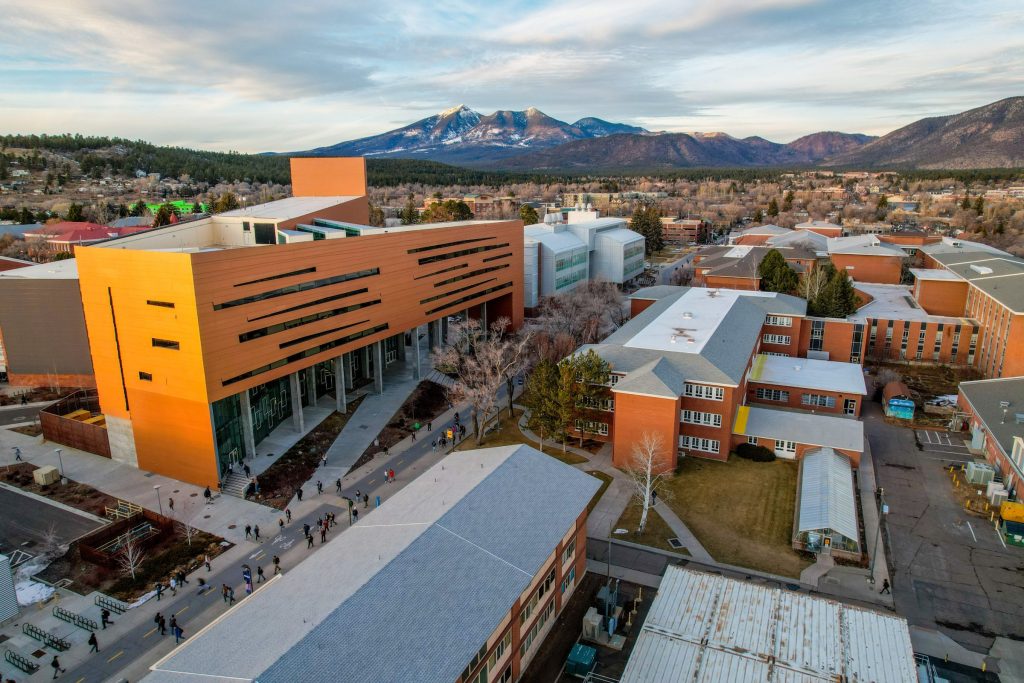
Located in Flagstaff, Arizona, Norther Arizona University has been a leader in education in many ways. Established in 1899 the school is one of only five universities to be awarded the Senator Paul Simon Award for Comprehensive Internationalization.
In other words, the school has been active in bringing global and cross-cultural experiences into its classrooms, which is all the more important for a school teaching students across the globe through the internet.
It is a well-respected research university with 36 satellite campuses scattered throughout Arizona, in addition to its main campus. There are 87 undergraduate programs with approximately 19,000 students. At the graduate level there are 58 programs with 1,800 online learners.
For the online or distance learning student there are 80 programs to choose from with 1,100 full time students and 3,200 part time students. Classes are taught by over 1,000 full-time faculty members.
Northern Arizona has taken a creative approach to helping students. Students can pay a flat semester fee and take samples from prospective courses. The ability to take a course for a test run is an effective way to find the right subject in which to get a degree, and avoid choosing wrong majors.
Florida International University
Miami, FL
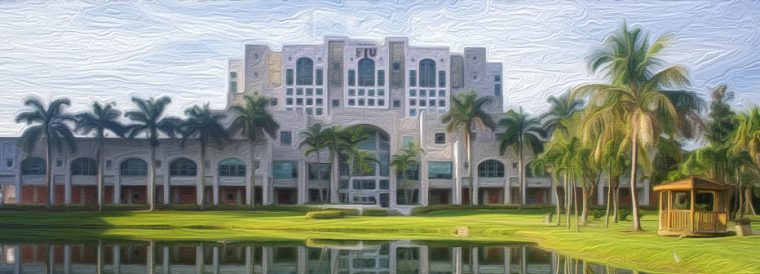
Florida International University has much to be proud of and holds many records. It has the honor of being Miami's first and only public research university, originally established in 1972. The school also holds the record for most students enrolled in the first year, which was over 5,000.
Furthermore, it is the youngest university to have a Phi Beta Kappa chapter established, the oldest national honors society. And it is ranked first in the nation in granting bachelors and masters degrees to Hispanics.
Accredited by the Southern Association of Colleges and Schools Commission on Colleges.
Grand Canyon University
Phoenix, AZ
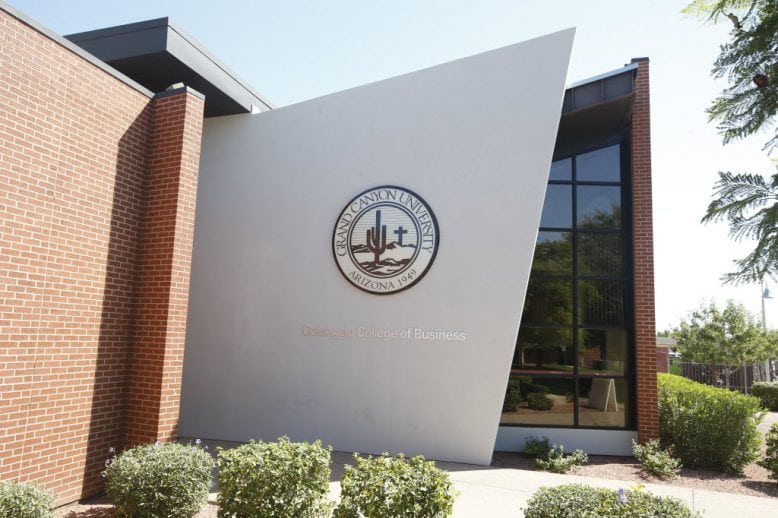
Grand Canyon University started off as a small, Southern Baptist liberal arts college in Phoenix, Arizona. It has since grown into a substantial learning center with over 100,000 online learners.
This success comes from many sources, but perhaps the most notable is the school's unique scheduling system. Most schools will ask students to study several topics at a time during a semester. Grand Canyon, however, gives students one intensive course at a time.
Grand Canyon has retained its Christian character. To this day it builds its vision on four distinct principles, which include Academics, Christian Camaraderie, Extracurricular Excellence, and Wellness & Well-Being. The school encourages its students to find their purpose in Christ and apply their Christian morals in the workplace.
Accredited by the Higher Learning Commission.
Brenau University
Gainesville, GA
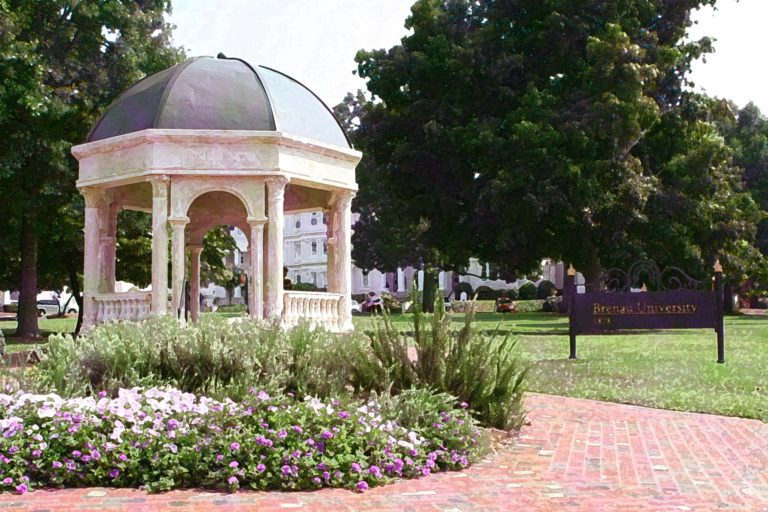
Brenau University was founded in 1878 originally as the Georgia Baptist Female Seminary. It has remained a privately owned institution until 1911 when a board of trustees assumed stewardship.
The education of women continues to be the goal to this day. Men are accepted into the adult and graduate studies programs. The school's academics are divided into four sections, which include Health and Science, Fine Arts and Humanities, Business and Mass Communication, and Education
In 2002, Brenau's Online College was formed. Students may use online courses as a supplement to regular classes, but Brenau also offers completely online tracks in business, nursing, gerontology, accounting, organizational leadership and human resources management. Brenau uses several methods to make sure its students maintain a personal connection with the school.
For instance, they are required to attend class at least five days per week. This helps provide structure to the otherwise open-ended nature of online programs. They also have access to both tutors and a counseling service.
Accredited by the Southern Association of Colleges and Schools Commission on Colleges.
Everglades University
Boca Raton, FL
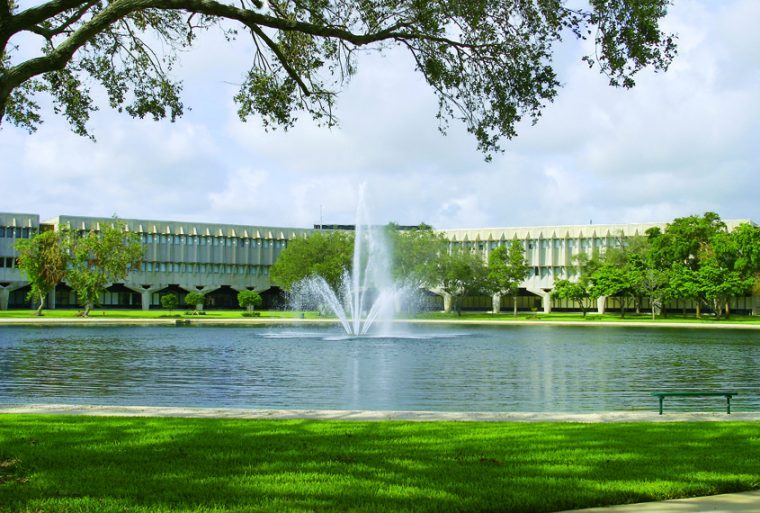
Everglades University is a not-for-profit school based out of Boca Raton, Florida. Although originally known as the American Flyers College, the Everglades name is quickly gaining a reputation for a unique paradigm for online education.
Many schools take a "me too" approach to learning by offering degrees that everyone else provides. At Everglades University you can study a wide variety of degrees which lead to jobs in developing industries.
These include alternative medicine, land and energy management, environmental policy and management, construction management, crisis and disaster management, and the aviation/aerospace sciences.
Students can also pursue both undergraduate and mater's degrees. Furthermore, the school's online degree benefits from a heavy emphasis on adult students drawn from many backgrounds. These students study a single course at a time.
Accredited by the Commission on Colleges of the Southern Association of Colleges and Schools.
Saint Leo University
Saint Leo, FL
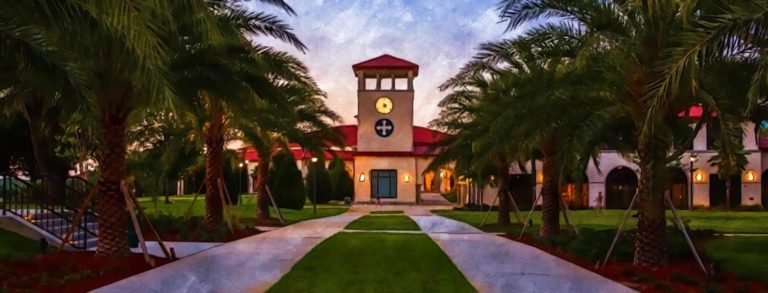
Saint Leo University is a private, non-profit, Roman Catholic university established in 1889 by the Order of Saint Benedict of Florida. As both the oldest Catholic college in Florida and the sixth-largest in the United States, Saint Leo has a large student population to draw talent from.
Saint Leo was one of the first American universities to provide distance learning opportunities to students. Unlike some schools which fail to maintain the same level of quality between their on-campus and online courses, Saint Leo's online curriculum is identical to its traditional, Florida campus courses.
It established the center for online learning in 1998, and now offers over 40 associate's, certificates, bachelor's, and master's degrees. All students are introduced to this medium through the school's Strategies for Success course, which acclimates everyone to the full potential of online learning and makes sure everyone hits the ground running.
Accredited by the Southern Association of Colleges and Schools Commission on Colleges.
University of North Dakota
Grand Forks, ND
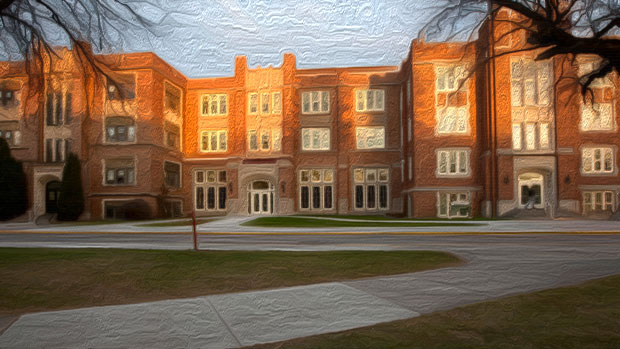
Located in Grand Forks, North Dakota, the University of North Dakota is the state's oldest and largest University. Founded in 1883, the school now enrolls 15,000 students. These bright minds have over 225 programs to choose from that are broken down into 3,000 courses.
For the graduate student there are 84 fields of study and for the online student there are 40 degrees available. It is the only school in the state to offer degrees in law and medicine. There are over 145,000 alumni with which to network across the globe.
The online student can choose from two styles of class structure. The self-paced independent study courses can be enrolled in and taken any time. Students in these classes may take up to 9 months to complete the course work.
There are also semester based classes, where students participate in a virtual classroom following the University's schedule and deadlines for course work.
These classes are more structured, but less flexible compared to the self-paced classes. The library offers 28,000 electronic journal subscriptions, and owns over 20,000 electronic books for the online student to use.
Accredited by the Higher Learning Commission.
Colorado State University Global
Aurora, CO

In 1870 the Colorado Agricultural College was founded as one of 68 land-grant colleges under the Morrill Act. The scenic college has developed along with the surrounding area in Fort Collins at the base of the Rocky Mountains.
Total living alumni exceeds 170,000.
For the online student there are many great opportunities, and over 10,000 students take advantage of them every year. The libraries offer 46,700 electronic journals and over 545,000 e-books. These classes are taught by experienced professors, many of whom have been internationally recognized in their respective fields.
For students who are not ready for a full 4 year degree, individual classes or shorter certificate program options are available. Colorado is so committed to education that they even offer many free online courses for personal enrichment. They are also one of the few schools that runs an entire online veterinary medical school.
Accredited by the Higher Learning Commission.
Post University
Waterbury, CT
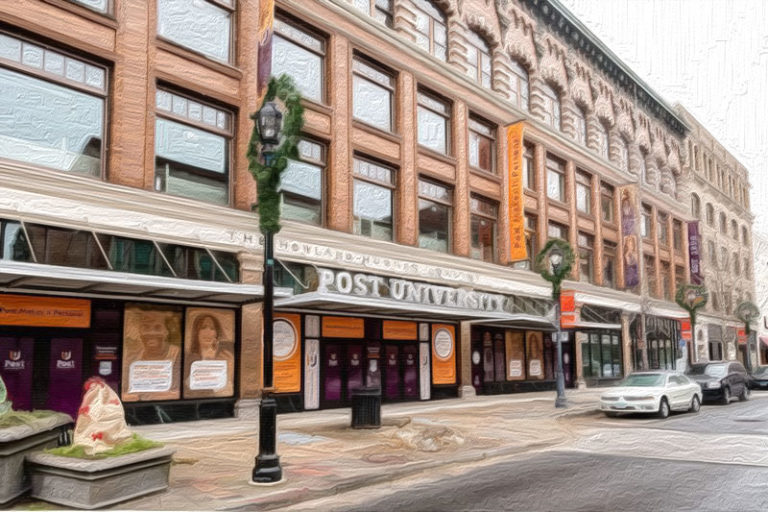
Post University's online degree program believes that no one knows you better than you know yourself, so the first thing they do is listen to their students who are newly enrolled online.
Post prides itself on learning about their students' strengths, interests, and goals. Then they build a custom program tailored to you. And they have been doing this through online programs since 1996.
Now, they have more than 15,000 online adult learners acquiring and education through courses offered in eight-week modules, six times a year. And they also work with students who have studied at other accredited universities.
This means that one can complete their bachelor's degree in a mere 18 months, and their master's degree can require as few as 14-24 months. Post understands how important it is to make education affordable, but it does so with one of the most flexible schedules, that is in tune with its student's needs.
Accredited by the New England Commission of Higher Education.
University of Massachusetts Global
Irvine, California
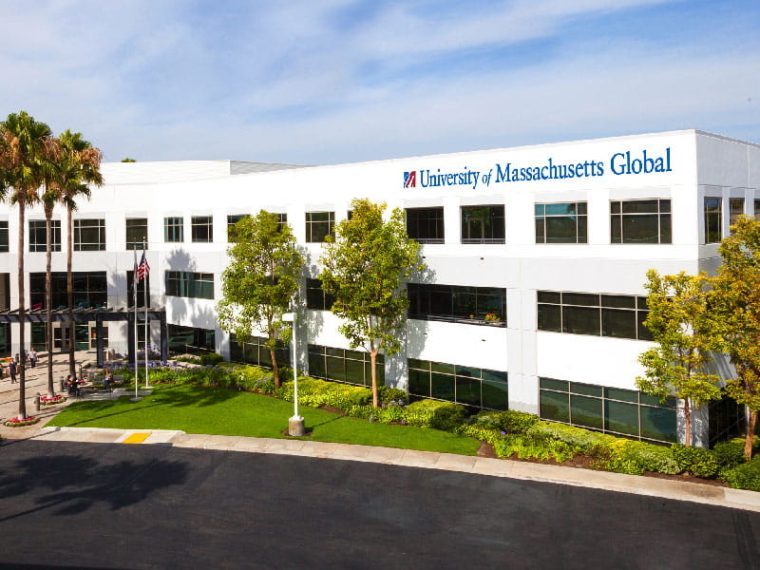
Founded in 1958, Brandman University has spread across the whole of California and now operates out of dozens of campuses. In September of 2021, Brandman became University of Massachusetts University Global (UMass Global).
It offers an extended education program both on campus and online. UMass Global University draws strength and resources as one of California's oldest and most prestigious private universities.
More so than just about any other school on this list, UMass Global utilizes the iDeal (Instructional Design for Engaged Adult Learning) approach to education. This system heavily integrates online and traditional learning through blended formats. Incorporating the internet into standard curriculum has streamlined its distance only education.
The school takes pride in its Corporate Training and Custom Solutions program, which directly connects students to the business world. Virtually all of their brick and mortar programs are also available online.
Accredited by the WSCUC Senior College and University Commission.
Western Governors University
Salt Lake City, UT
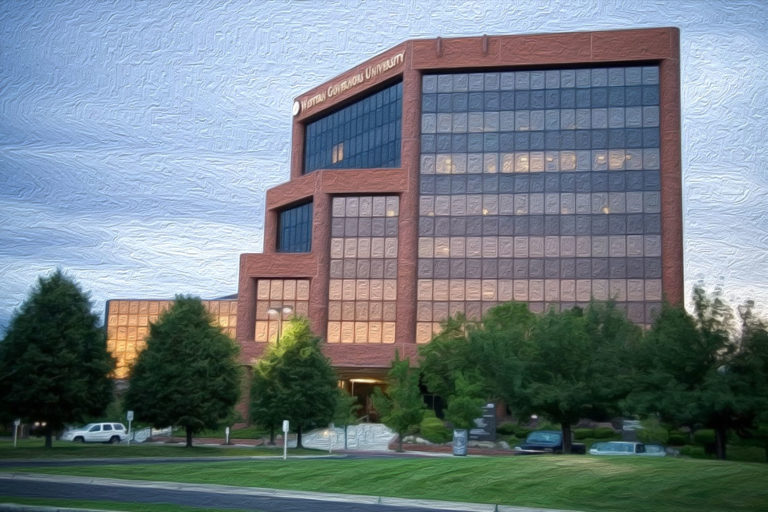
Western Governors University represents public servants at their best. Over four years, starting in 1995, 19 western governors came together to launch a more affordable alternative to higher education. The fruits of their labor is the aptly named Western Governors University.
The school now serves over 55,000 students from all 50 states. Its library has access to over 94,000 full text e-books. WGU runs an online Teachers College, College of Business, College of Information Technology, and a College of Health Professions.
WGU focuses on practical education that results in employment, and offers this education through licensure and both bachelor's and master's degrees. Given its historic founding, noble mission, and rapidly growing student body, Western Governors University ascends in the world of education.
Accredited by the Northwest Commission on Colleges and Universities.
Ranking methodology:
This ranking is based on academic influence, variety of course offerings, student resources (such as digital online libraries), alumni network, research budget, and cost. As always at Successful Student, this ranking is considered from the student's point of view.
Our online colleges ranking is formulated using data from the National Center for Education Statistics, and the academic influence of the faculty and alumni of those who work, or have worked, or attended, or graduated from these online colleges and universities.
Federal financial aid for online college
Financial aid is potentially available to college students who are admitted to an accredited online college. See our Financial Aid Guide for Online College Students. Student aid from the federal government is granted to those who fill out the FAFSA (Free Application for Federal Student Aid) for qualifying students. The application process is pretty straightforward. The Federal Student Aid office will provide applicants a Student Aid Report. This is a summary of the FAFSA answers submitted in the application. If errors are found this is the time to correct them.
More resources:
- Online Colleges - A Guide for Students
- Online Business Schools: 50 Best Programs
- The 10 Best Online Associate’s Degrees for Careers
- What is the Difference Between College and University?
- The 20 Best Online Degrees for Careers
- The Best Degrees to Become a Social Media Influencer
- The 30 Best Online Business Degrees for Careers
- The Top 10 Most Popular Online Degrees
- The Best Degrees for Generation Z
- The Best Private Schools
